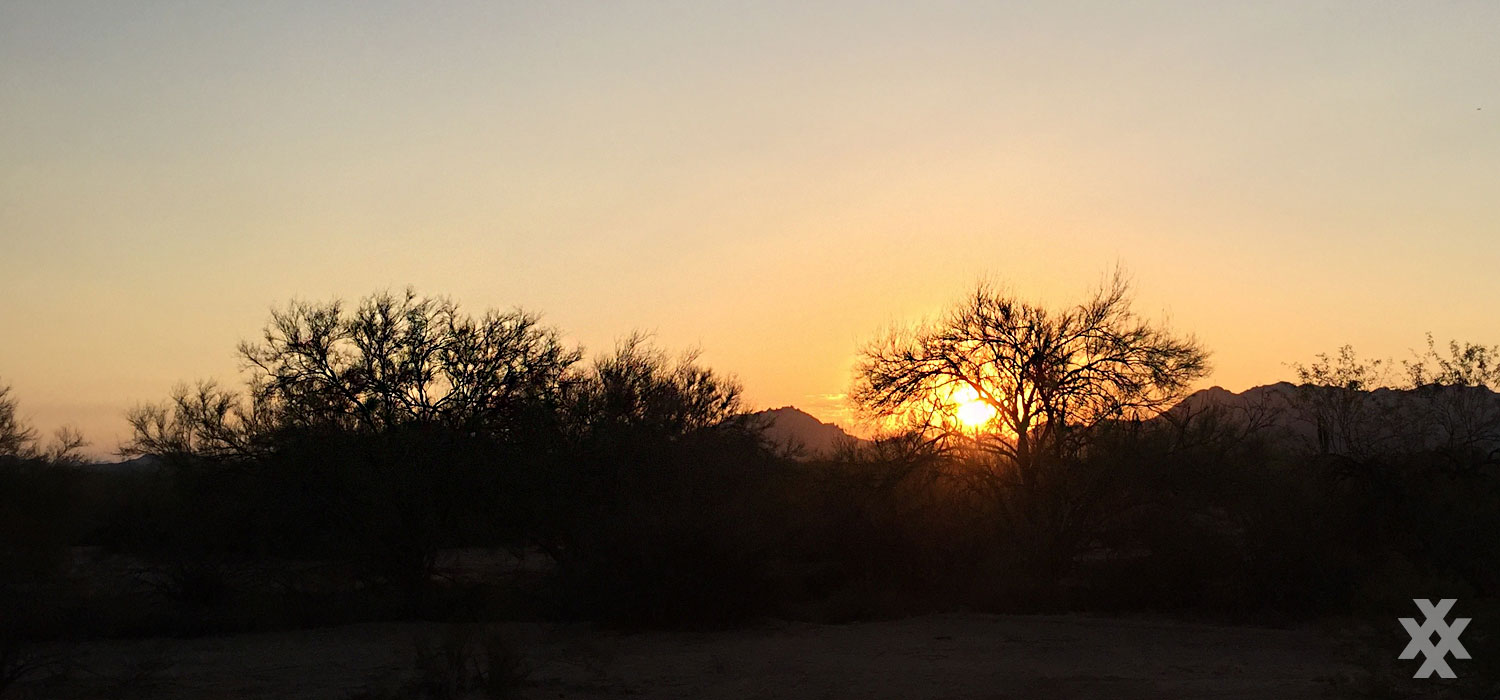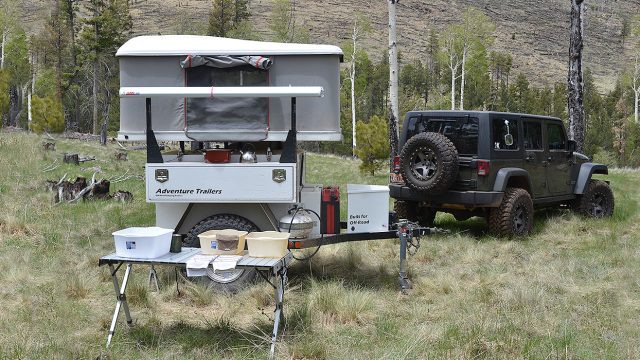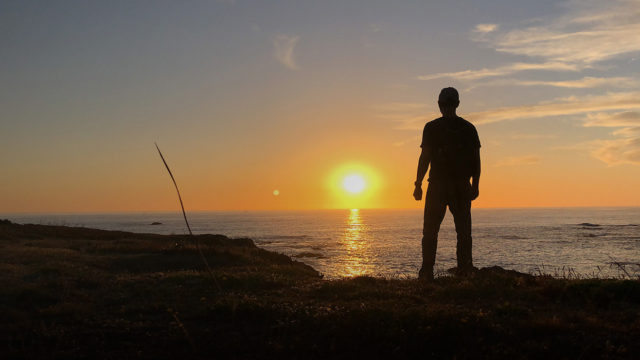I have planted and nurtured many trees in my life–some with real roots, bark and leaves, and others as commitments and promises to myself and others.
For over 30 years I have lived in a desert environment. I find it so fascinating to witness the resilience of a tree in the desert that found its place in the world, established itself, and through the toughest of circumstances and with astounding resilience, beat the odds against its survival and flourished.
Creation on Earth sprouts from the soil. A seed receives its nutrients from the ground where it has settled. While the seed sprouts upward, it also equally invests its energy to drive roots downward. We aren’t that different than the trees, really. We also require nurturing from our creator and must cultivate that relationship. As we grow, we must invest in our growing trunk–our physical self. Then, God willing, our trunk sprouts relationship branches and supporting leaves to nurture our growth. If we are lucky enough, we produce fruits of our labor– the real gifts of this life.
I live in the desert Southwest of the United States. Here the average rainfall is a parching seven inches per year. The rest of the year it seems that life for desert vegetation is marginal. Then, in the summer months, the monsoons arrive. The billowing clouds bring a deluge of nutrient water yet, with them come high winds, flooding, and lightning that can produce desert brush fires. The ground is so solid that much of the rainfall doesn’t soak into the ground and instead runs off and collects into arroyos that become mighty torrents of rushing water that destroy everything in their path.
Needless to say, to really get to know a desert tree is to appreciate its survival. There is much to be learned from trees. There are so many analogies, so many lessons, and so much sacred value that can be gleaned from them.
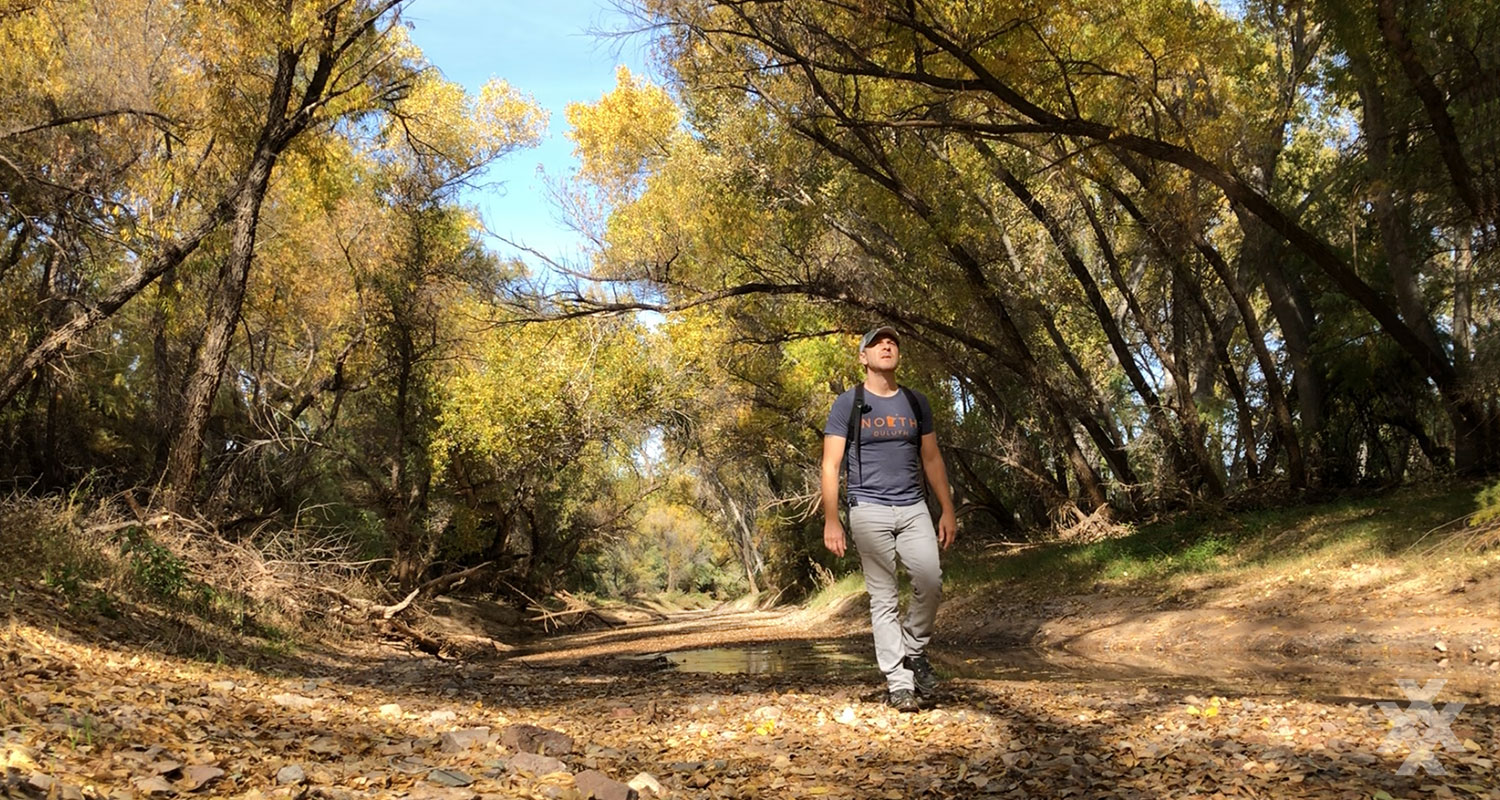
Author, Scott Leuthold, explores on a solo hike of the San Pedro River Valley of southern Arizona.
This story is about roots.
Trees of every kind have them and without them, they would most definitely perish. In fact, without them, they wouldn’t be trees at all. What seems so random when walking about in the desert near my home is likely much more destiny than meets the eye. What is it that invites a tree to take up root where it does? Is it random or is it part of a divine plan? While hiking, I have often seen trees growing out of the side of a rock cliff. As precarious and unlikely as that may seem, is it destiny for that tree to be there? Are its roots forcing that rock to break apart influencing the landscape to evolve?
Planting Trees
Planting trees in the desert is an entirely different consideration. I have planted many trees over the years. When we plant a tree, it is not the tree itself that must persevere but rather the planter. That tree’s survival, for at least the first several years, is now almost completely dependent on the planter. To plant a tree in the desert is a fairly significant undertaking and to do so one must realize the full commitment.
The very first step in planting a tree in the desert, of course, is to decide where that tree will be planted. We ‘plan out’ where that tree will go. It is our decision, our personal desire or choice, as to where the tree will be asked to grow. Once we have decided what kind of tree we would like to plant, we then must invest a great deal of effort to dig a hole. In fact, digging a reasonably sized hole in the desert is no small task. Considering that to have an in-ground swimming pool added to your back yard often requires dynamite to create a hole, digging a hole for a tree by hand can often take upwards of a solid week. To dig that hole, one must use a pickaxe and steel javelin rod and soak the hole with water over and over to go deeper.

It is often in the face of adversity that we gain wisdom. Wisdom is a remarkable foundation for the desire to drive roots deep.
Once the hole is dug, it’s time to plant the tree. But, water is scarce so we must also dig trenches and install watering systems on a timer that delivers water to the tree at regular intervals throughout the day. We must also stake that tree up with twine and post in order to avoid the tree tipping over in even the slightest wind.
Then comes the nurturing. Over the next few years that tree will hopefully grow, however, the species genetics have evolved over time and thus that tree must adjust to the nurturing that it isn’t used to receiving. It isn’t used to the regular water intervals but it also will likely not survive without them. A complete dichotomy surfaces with the desire for a tree to grow in a particular place as opposed to nature dictating where it will grow.
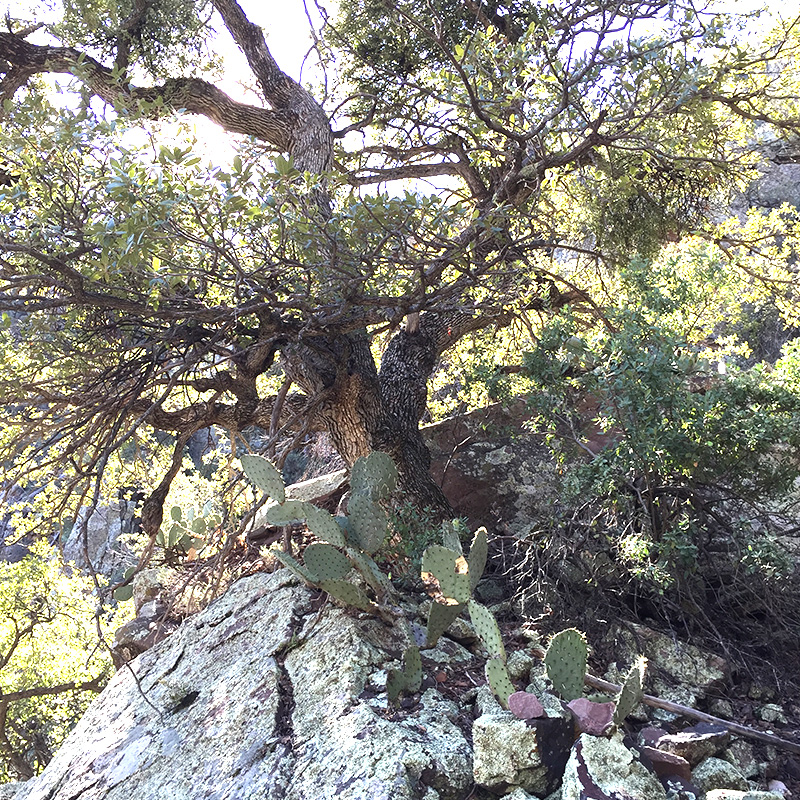
A wild Ironwood Tree grips to a boulder in a remote canyon.
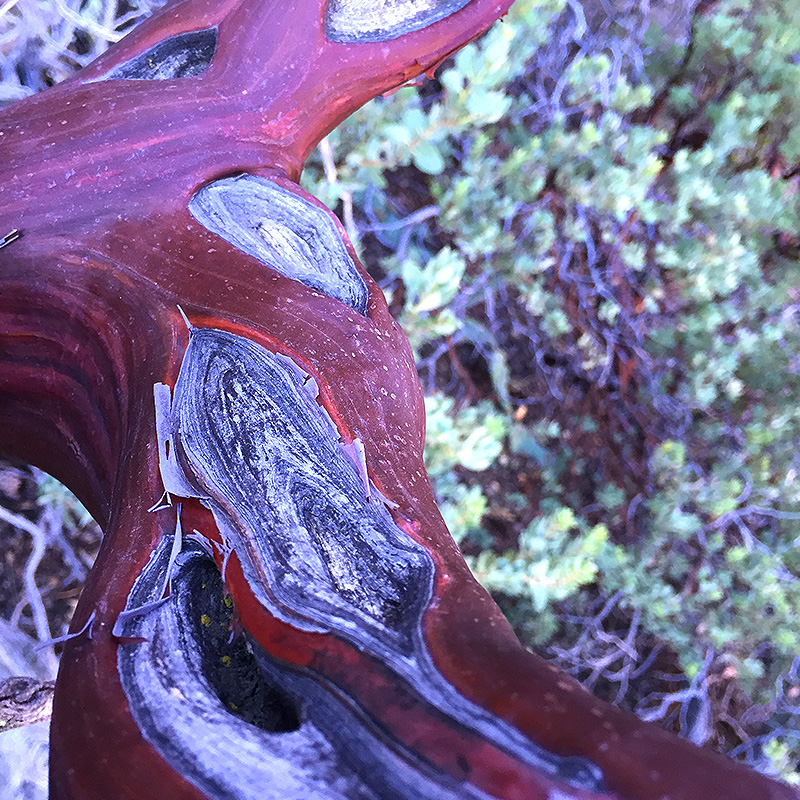
The remarkable smooth red bark and twisted branches of a Manzanita.
Trees tend to thrive from the nurturing. But truth be told, there are entirely new challenges with a desert tree that grows well as a result of nurturing. A tree that grows in the wild of the desert is determined to survive and because so, that tree penetrates its roots deeper and deeper into the ground in order to reach an underground water table. This often requires the roots to drive very deep. With such deep roots giving that tree remarkable stability, that tree can survive about any storm. A planted tree, on the other hand, has water fed to it from the surface. The tree is free to sip on that provided water at its leisure and thus it has no will and no motivation to drive its own roots deep into the ground for water. It simply doesn’t have to so it doesn’t waste its energy.
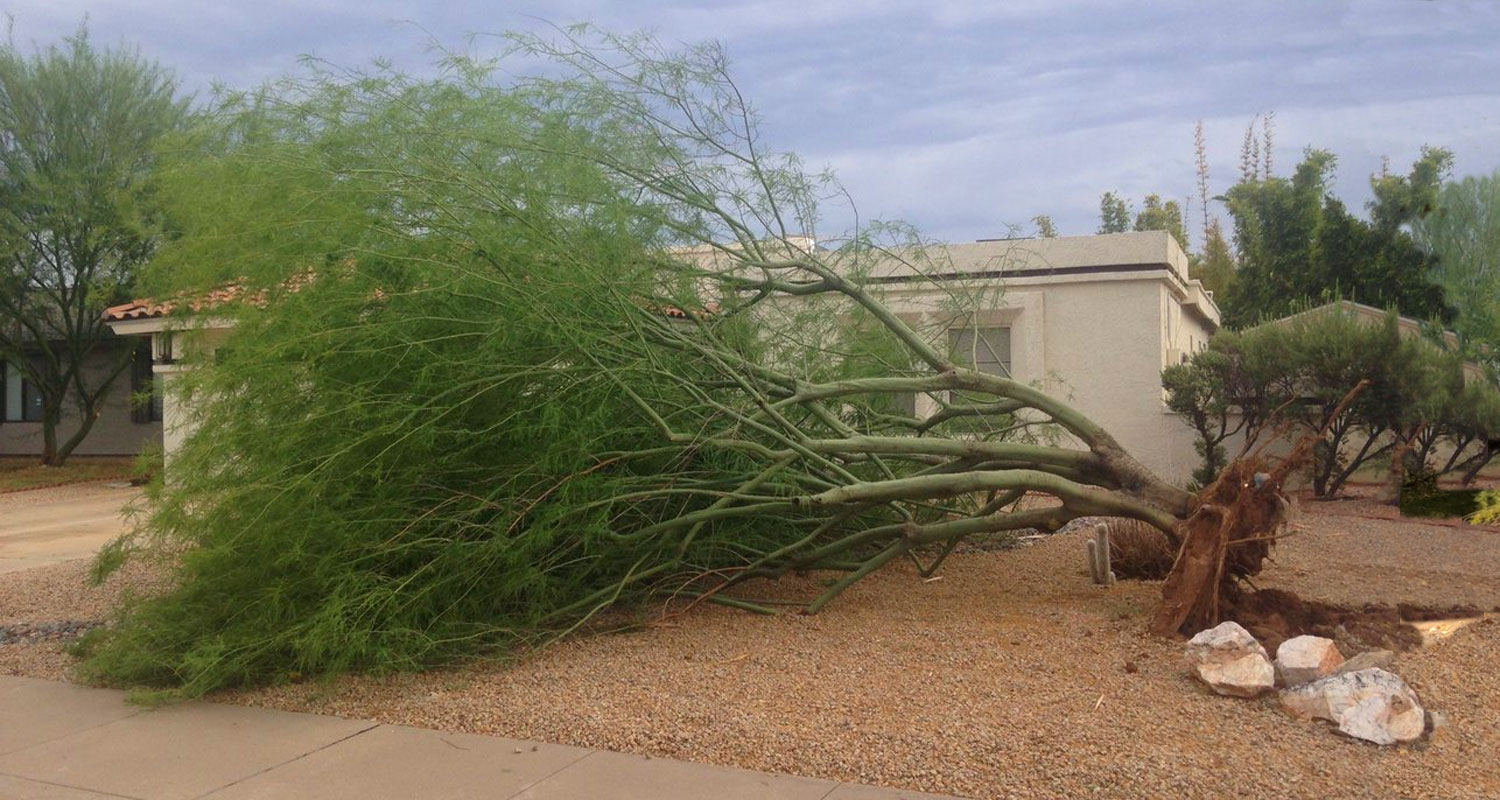
A planted Palo Verde tree topples in a monsoon due to high winds, top heavy branches and shallow roots caused by overwatering on the surface.
In fact, most trees I have planted become exceedingly top-heavy. They don’t bother growing much below the surface and instead spend all of their effort displaying majestically above ground. They sprout huge branches thick with leaves. Because that tree makes no effort to drive its roots deep it remains completely vulnerable to strong weather and electrical outages that may inhibit the automatic water system. Essentially, it remains quite dependent on the planter. With a top-heavy tree that has no deeply planted roots, instability is constant. The planter must continually thin out the tree branches and reinforce the tethers of twine and post around the tree to keep it standing. Just when the planter thinks the tree is stable enough to remove the tethers a proper storm moves in and puts that tree at risk.
Eventually, most planted trees become established enough to remain standing on their own and most flourish. Yet, storms come and go and with them so do the branches of that tree. This is why after a monsoon storm many trees are either down or split in half with huge branches thrown about the ground.
The experience doesn’t go without continual presentations of irony. Can you adjust the water of a tree and deliver it deep in the ground under the tree to encourage the roots to drive downward? Of course. Can you limit the water a planted tree receives in order to encourage more root growth? Probably. It is a true art to nurture a planted desert tree to be self-reliant.
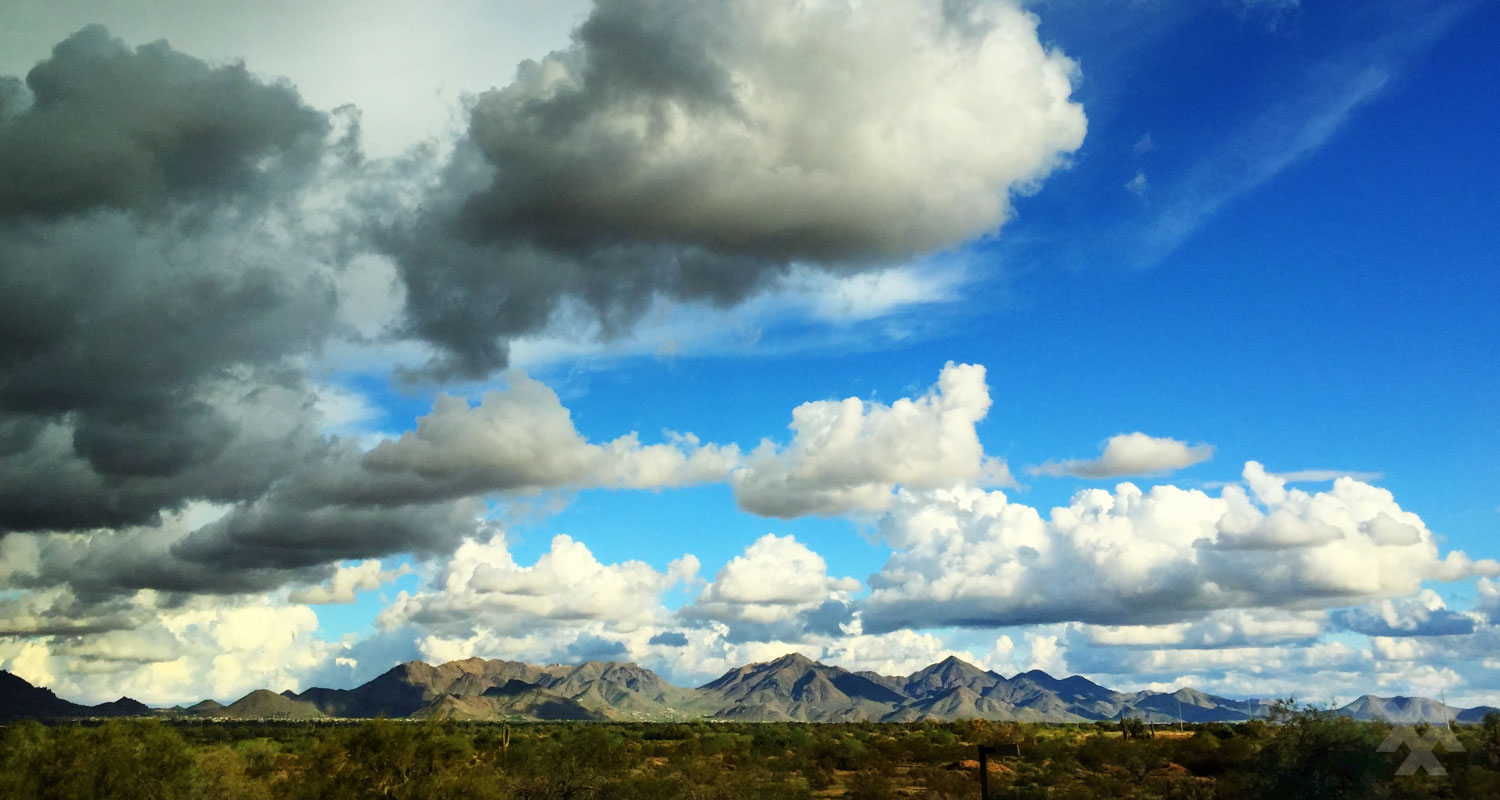
In my musings, I have often related the comparison of the wild tree and planted tree to life. How do we establish roots that will last the test of time? In every moment we make new decisions and choices and must regularly assess new outcomes that result. In those choices, there are countless long-term effects and circumstances–most of which don’t surface for years after the decision was made. Some choices root us in one place voluntarily. Others root us seemingly involuntarily. It is the commitments we make to staying in one place that actually result in us staying in one place. Buying a house, for instance, requires responsibility to pay for it, to maintain it, and to make it a home. Having a child with a partner and making commitments based on moral values
to nurture that child until they are well established on their own will most certainly keep us in one place. Let’s also be sure not to overlook the perseverance one must possess to driving roots deep. It is often in the face of adversity that we gain wisdom. Wisdom is a remarkable foundation for the desire to drive roots deep. Without being deeply rooted the wind can easily blow you to any corner of the world. I’m not suggesting there is anything wrong with being free to roam. This can be a rewarding life full of colorful experiences. I am also not saying that one whom has no commitments that keep them in one place cannot be grounded. It is possible, in my opinion, to be a grounded individual and yet roam freely.
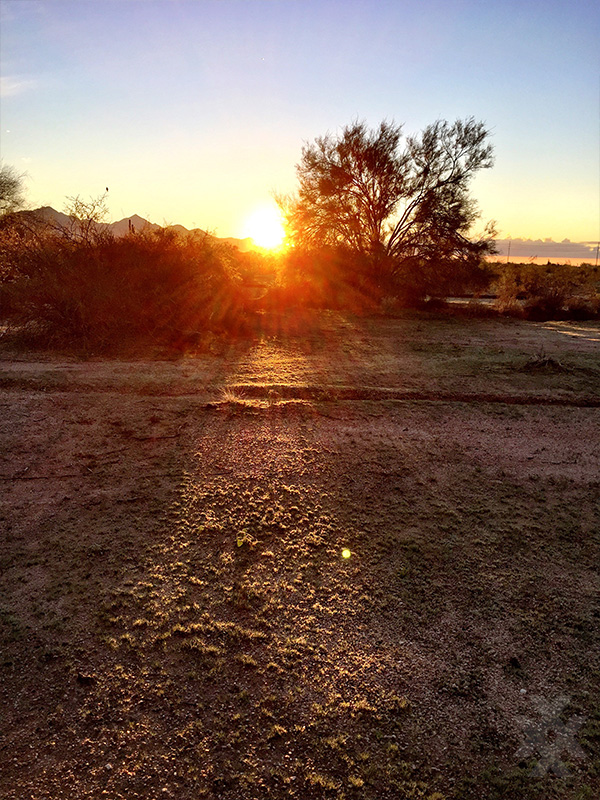

The question is: How do you want to ‘be’.
How would you like to exist? Are you a planted tree or a wild tree in nature? What commitments do you have that keep you planted? How can you honor your sense of place? How can you find value in your circumstances and still inspire others when they observe your branches, leaves, and bark…your noble, dedicated and committed self in this space and time?
Trees shelter us from the sun, provide us nutrients with their nuts and fruits, deploy oxygen for us to breath, shelter us from harsh weather, provide us their flesh to build our homes, give us beauty to observe, provide us opportunities to learn, and allow us to reflect and reward us with wisdom. They hold tremendous value to our survival and well being.

